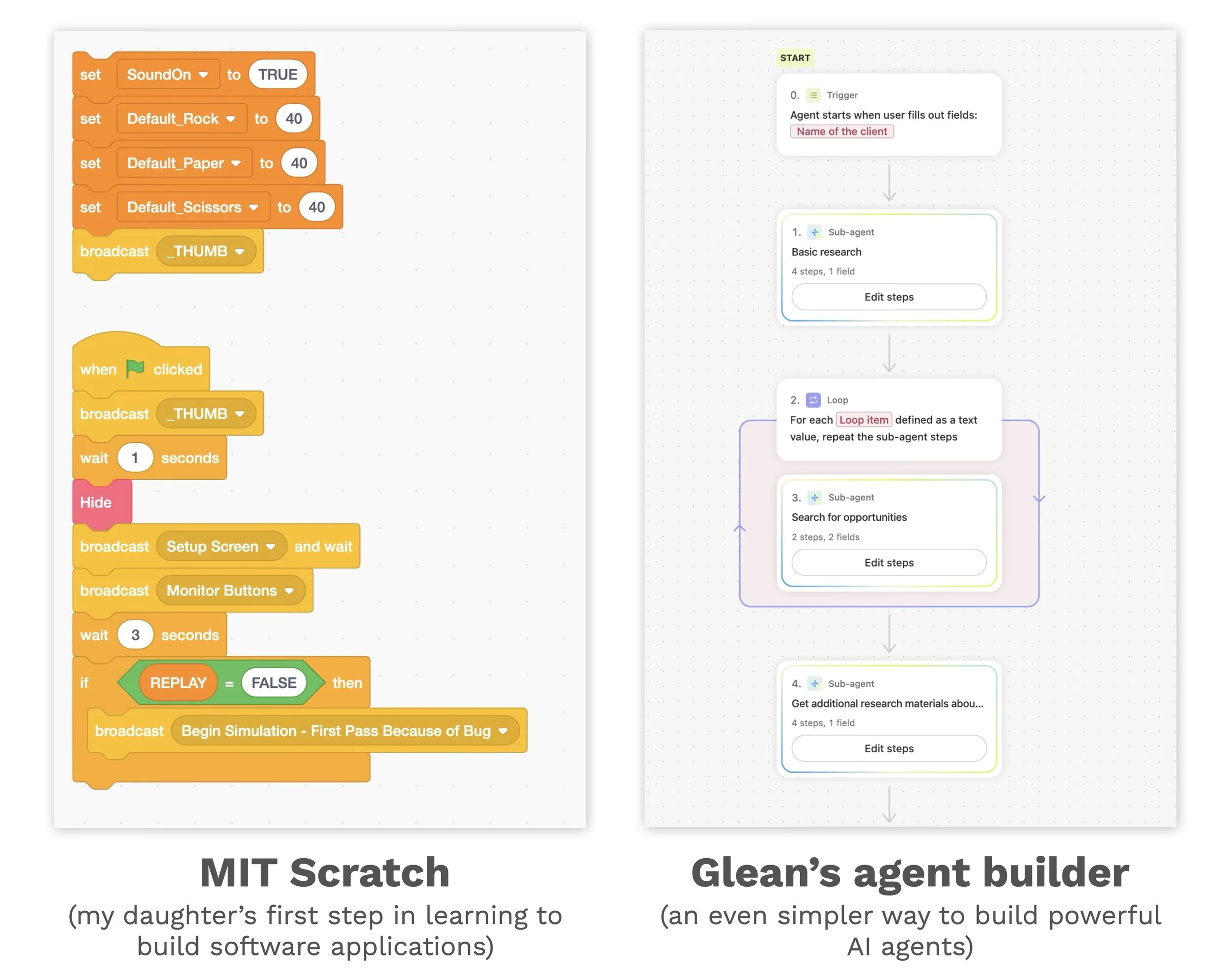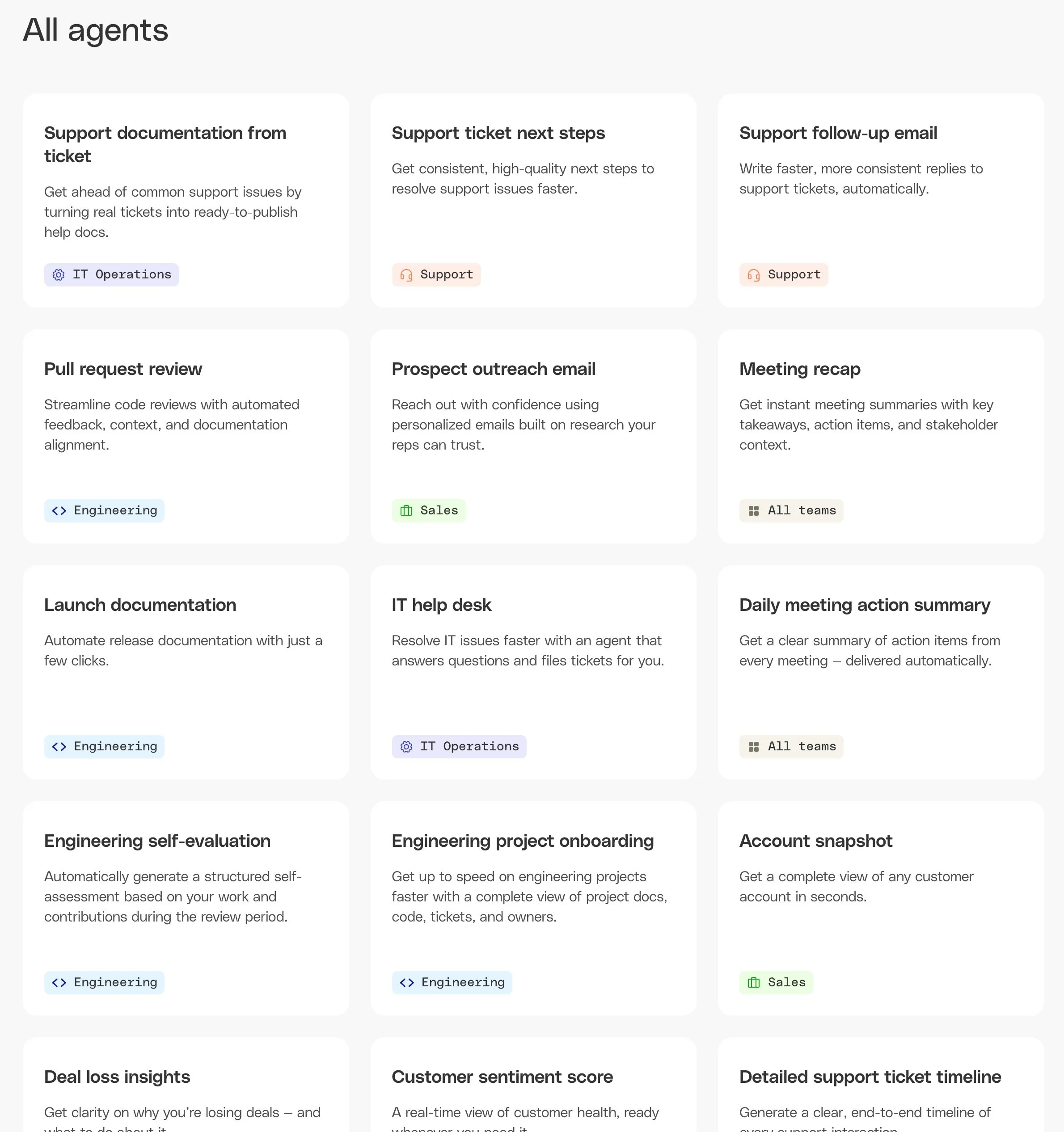The agentic enterprise will get worse before it gets better
Summary
Before companies seize productivity advantages through agentic AI, they’ll have to contend with a messy period of agent sprawl, poor design choices and inefficient workflows. When the dust settles, success won’t just be about the ease of agent building. The companies that succeed will most likely prioritise thoughtful design and problem solving, and find clever ways to balance bottom-up innovation with lightweight governance.
It was hard enough to have a 10-minute conversation in tech without the mention of AI. In 2025, it’s all about agents. For the uninitiated, agents are small, semi-autonomous AI programs that behave like smart coworkers. Name the use case — HR, coding, marketing, research — and there’s an agent for that. As AI tools like Glean, Copilot, and Vertex mature, agents are becoming the new coworkers in our digital offices.
You and I might soon be tripping over agents as we traverse our digital workspaces. The future looks bright, but I sense that we’ll suffer a bleak period before we realise the benefits of an agentic enterprise. Let me explain why.
Paving corporate cowpaths
First, there was the web. Then there was social media. Then there was the cloud. Mobile, big data and blockchain followed. The original sin of implementing every new technology wave was what we call “paving the cowpath”. Facilitating inefficient processes using tech only exacerbates the inefficiencies. Take e-governance in the global south, for example. Our government executives function like feudal overlords. It doesn’t matter that the systems are now online. The establishment’s apathy doesn’t die with new tools; it becomes even more rampant in some cases.
Corporations, especially their inner workings, aren’t always better than governments. Bullshit jobs, inefficiencies, and red tape are rampant in corporations, too. Building agents without eliminating these dysfunctions or at least charting a course to reduce inefficiencies is the 2020s version of paving the cowpath.
For most technologists, this pitfall has been evident since the time of Adam. But there’s something special about AI. These days, building agents is so easy that my daughter had a harder time learning MIT Scratch than I did figuring out Glean’s agent builder.
Building agents is easier than learning MIT Scratch for 5th grade computer science
Some years back, building software was the most expensive activity, or at least it was visibly so. Cost-prudence was a good enough incentive to first streamline processes, before we built software tools. But when building agents is so easy, it’s tempting to score easy wins by slapping AI pavements over corporate cowpaths.
The death of design
The breathlessness of the AI revolution has meant that everyone suffers from FOMO. Companies can’t wait to unleash their agent suites. Employees want a slice of the action, lest they fall behind. All of us and our uncles are AI experts, if we may. A chatbot here, an agent there, some MCP and A2A to go with them, and you can have yourself a seductive AI demo. And no one has the patience to let experiments run their course. Bring the tools to market or lose your competitive advantage. It’s urgent! Or so the consultants say.
Amidst the gold rush, we can’t let design lose its voice. Indeed, agents revolutionise the way we integrate with data, knowledge and systems across the enterprise, but surely we can’t throw a slew of agents at our customers and colleagues and hope that they’ll figure things out for themselves? Surely, if agents are to facilitate team and organisational productivity, designers must make workflows evident to users, shouldn’t they?
Where do humans-in-the-loop come into play?
How do we structure complexity?
Where’s the incentive for sceptics to adopt these new tools if they feel confident about their existing ways of working?
How do we handle user error?
These are important design considerations that many of us aren’t thinking about yet, as we rush to seize the agentic advantage.
The bazaar without a cathedral
Vibe coding and agent building are the next iteration of the no-code revolution. Every promise of no-code is even truer with AI. No-code promised democratised innovation through citizen developers and citizen apps. Work AI platforms promise the same benefits through their agent builders. There’s immense value to letting a thousand flowers bloom and embracing the bazaar-like chaos that ensues. The pitfall, however, is to leave the bazaar unattended.
The success of a frictionless bazaar doesn’t preclude us from building a cathedral. Think about the following questions.
How important is it to surface “company standard” agents?
How do you avoid the situation where multiple agents do the same thing, with little or no difference in behaviour? Much like any effective platform, how do you promote agent reuse?
Let’s assume you can encourage users to reuse existing agents in their workflows. How do these existing agents retain backwards compatibility as their authors improve them?
How do you improve the signal-to-noise ratio of your agent library by removing agents in disuse? How will you promote the best agents?
Agent sprawl is real. At Thoughtworks, we have close to 400 agents on our agents platform, within 50 days of going live. And that’s with just 500 odd active users! How does a user distinguish between four agents that all fetch case studies, with slightly different filters, and no way to identify a “recommended” one? In the early stages of this agent revolution, sprawl may even be a desirable outcome, but in the long run, it’ll pose a productivity and efficiency challenge.
(Courtesy glean.com) After a point, it’s hard to work with an endless list of enterprise agents
Despite the growing pains, I remain optimistic about the promise of agentic AI as a way to transform organisations to new ways of working. At the same time, Gartner predicts that companies will cancel 40% of agentic AI projects by 2027. Anushree Varma, senior director analyst at Gartner, says,
“To get real value from agentic AI, organisations must focus on enterprise productivity, rather than just individual task augmentation.”
We’ll unlock that new level of enterprise productivity when we reimagine the ways we work, now with AI as a coworker. Companies will have to prioritise thoughtful design, and agent moderators and platform vendors will have to provide ways to manage agent sprawl. Unlocking the agentic advantage will require more than just easy agent building. It’ll demand a deep rigour in problem-solving and managing the company’s tools and solutions.



